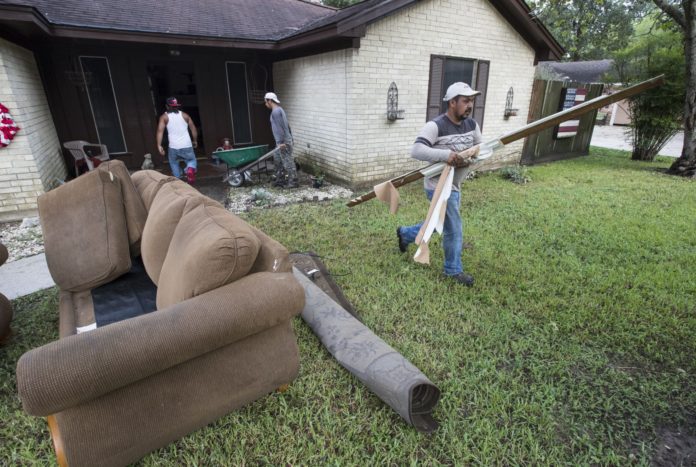The cleanup and recovery from Hurricane Harvey will have a ripple effect on construction throughout the rest of state, compounding labor shortages and spiking prices of homes, apartments and commercial development, say experts.
As insurance and disaster relief funds start flowing into Houston and communities along the Gulf Coast, the demand for workers to repair and rebuild will skyrocket.
“Tens of thousands of houses and apartment units were destroyed along with hundreds of thousands of square feet of commercial space, not to mention billions of dollars of public infrastructure in sewer lines, schools and public buildings,” said Dr. Jim Gaines, chief economist for the Real Estate Center at Texas A&M University.
Harvey’s devastating punch comes at a time when the construction industry, and especially homebuilding, has had trouble keeping up with demand throughout the country, and most especially Texas.
In Dallas-Fort Worth, home prices ranked No. 2 on the Zillow Real Estate Market Report in June of the fastest-growing markets in the U.S. The average home price reached $211,000, an increase of 10.5 percent. The national median home value jumped 7.4 percent to $200,000.
DFW’s rising home prices is a trend ongoing for the past few years and is largely attributed to the imbalance between supply and demand, experts say. The persistent tight inventory of homes has also shut many prospective homebuyers out of the market because homes are rapidly becoming unaffordable.
And those problems are expected to become even worse as laborers are drawn to the Gulf Coast for up to two years and the price of some building materials skyrockets if demand outstrips supply as often happens during rebuilding after disaster.
“My thought around labor are driven mostly by the shear amount of money about to be deployed to Houston and guaranteed, consistent for construction workers,” said Paige Shipp, regional director of Metrostudy, a housing industry analysis firm. “This is one area where it could hit us hard.
“If a residential laborer wants a guaranteed paycheck, they are better off going to Houston rather than staying in DFW, at least for next one-and-half to two years,” she said.
Austin and San Antonio “could also be on the losing end of this equation,” Shipp said.
Prices for roofing supplies as well as drywall, lumber and appliances could also jump if demand outweighs supply, Shipp said.
Pia Orrenius, vice president and senior economist for the Federal Reserve Bank of Dallas, said the anticipated bleed-off of construction workers in the Dallas-Fort Worth area comes at a time when unemployment is low and hourly wages for construction workers – as well as other hourly workers – are rising steadily.
“That suggests a very tight labor market,” Orrenius said. July figures show that Texas’ unemployment had slipped from 5 percent in April to 4.3 percent. In Dallas, unemployment dipped to 3.7 percent in July and to 4.4 percent in the Arlington-Fort Worth area.
“Supply is not keeping up with demand and with a tightening labor pool, prices are just going to keep going up for all types of construction,” Orrenius said. “We foresee the labor market getting very tight in Dallas-Fort Worth beginning in October when laborers head to Houston for cleanup and rebuilding.”
Rebuilding after a hurricane typically draws huge pools of laborers to take part in the effort and benefit form an extended period of steady work, experts say.
But circumstances this time could have a far bigger impact to areas that were not touched by a drop of rain.
After Hurricane Katrina, tens of thousands of workers went to Louisiana to take part in the recovery, including many from Texas, Orrenius said.
But the loss of those workers barely impacted construction in other areas, including DFW, which was still riding the wave of the pre-recession building boom. Many of the laborers who went to New Orleans were undocumented immigrants, who were allowed to work in the recovery, experts point out.
“Because of enforcement at the border, we don’t have as many immigrants coming in the United States as we did then,” Orrenius said.
And because recovery in the construction industry was slow following the recession, many workers left the building trades for jobs in the oil and gas industry that was booming at the time, she said.
The bust in the oil and gas industry hit Houston hard and choked off a lot of new residential and commercial building. Before Harvey struck, the economy in Houston had started to pick up and construction workers were being lured there from other areas.
Population growth in Texas as a result of corporate relocations such as Toyota’s move from California to Plano has also swelled demand for new homes and businesses to accommodate the newcomers.
Despite rapid price appreciation, Dallas-Fort Worth and all of Texas, remain affordable compared to New York, San Francisco and Los Angeles.






